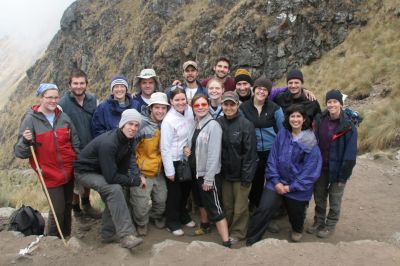 |
|
Dead Woman Pass |
A vigorous walk leads them to the dead woman pass, where the real Inka Trail begins. The camp is very rustic with glacier cold showers.
(Map this!)
Despite being older by a decade to the next youngest team member we made good time to the Dead Woman pass. The reason for the name is ambiguous – depending on who you believe either an old woman died on the ascent or one can see the form of a dead woman amongst the ridge tops.
This was supposed to be the hardest day of the trek but in the end it presented only minor challenge as we used Dick Wurms famous amblin’ method from Aconcagua and both the altimeter and the Heart Rate Monitor to pace ourselves.
The road from here was the real Inka road, as in it had been laid by the Inka and not ‘reconditioned’ by the government. A long steep descent brought us to the second camp of the trail, Pacamayo. The campsite was a dump with low slung buildings and muddy dirty campsites. The porters had run ahead of us and setup the tents and bowls of steaming hot water to wash our face, hands, and feet.
 |
|
Q’Ente Group at the Dead Woman Pass |
Slowly the anticipation of reaching Machu Picchu was building, but we had to wait several days to get there. The Inka Trail was cleverly designed to create drama and not reveal its secrets all at once – one has to work hard!